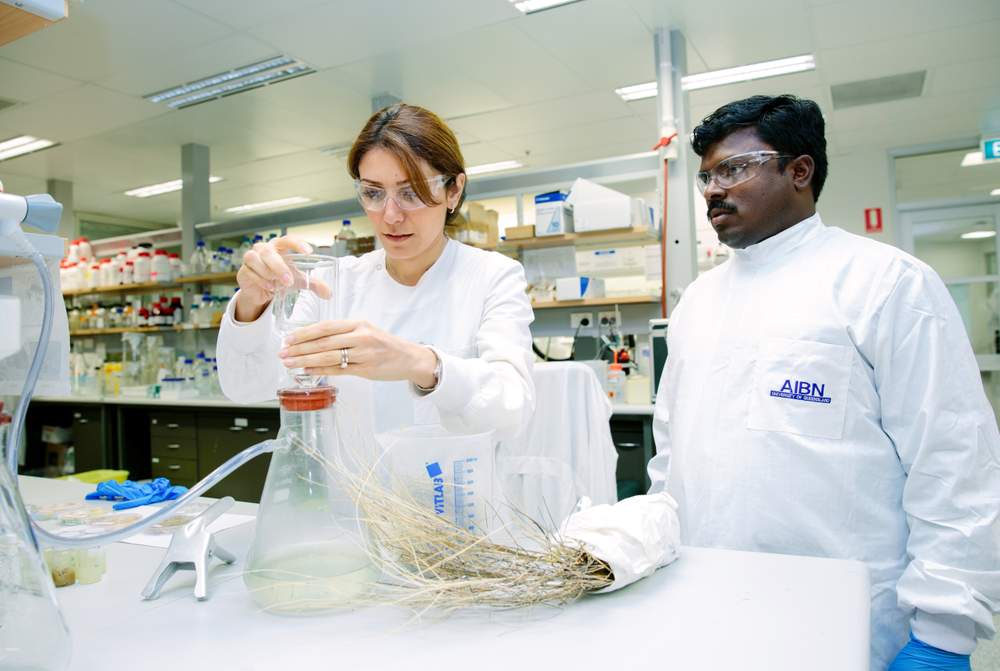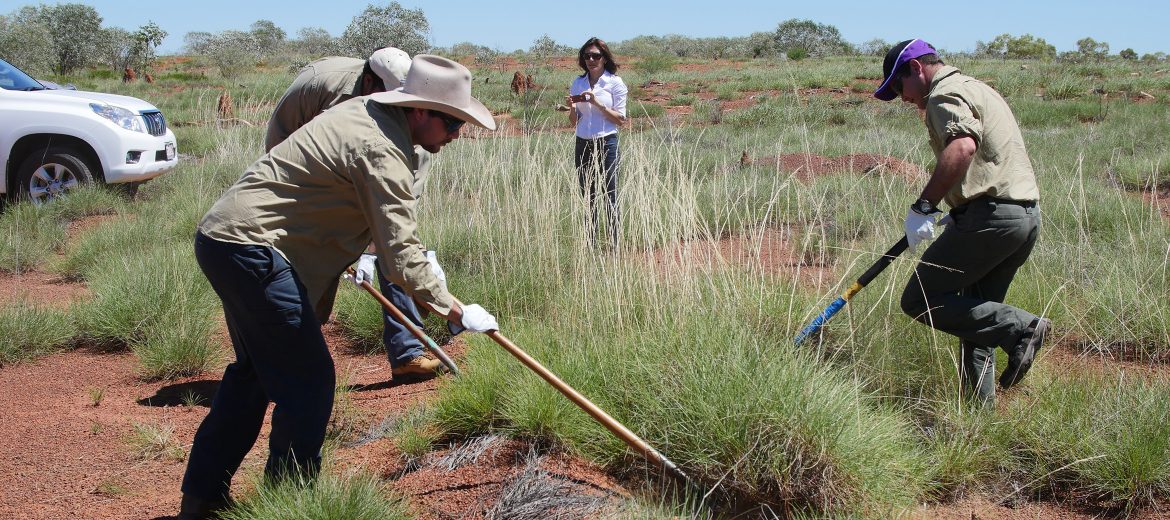Spinifex, a hardy Australian grass, spread widely across inland Australia, presents a new high-tech opportunity for the future of construction, medical technology, and day-to-day life.
In partnership with the Indjalandji-Dhidhanu People of North-West Queensland, through Bulugudu Ltd, researchers at the University of Queensland have been developing a high-tech product from the spinifex that grows abundantly on their lands: nanocellulose.
Spinifex nanocellulose is a stronger, more eco-friendly, and energy efficient alternative to other sources of nanocellulose, and its harvesting and initial processing supports local Indigenous jobs. It can be used in an incredible range of applications from creating stronger concrete and better condoms, to low-cost carbon fibre. It can also form a gel made up of a network of nanocellulose fibres that trap and hold water. This gel has some potentially exciting applications in healthcare, as a medical gel, and in agriculture as a growth regulator to boost crop yield in semi-arid regions of Australia.
Two facilities supported by the Department of Education through NCRIS, Microscopy Australia and the Australian National Fabrication Facility (ANFF), have provided critical long-term support for this project. Since the project’s inception in 2012 Microscopy Australia has provided the research team with access to advanced microscopes that have allowed them to develop, refine and test new products, including the new nanocellulose gel. Images from these microscopes helped to demonstrate proof-of-concept and were used in the nanocellulose product patent. The Australian National Fabrication Facility’s support for this project includes access to the specialist tools needed for working in the nano regime and, through its commercialisation arm, ANFF-C, the funding and facilities for further proof-of-concept work to advance the product to a point of maturity where it was investable.
Former lead researcher on the project, and spinifex nanocellulose discoverer, Prof. Darren Martin said “These types of projects typically involve over a decade of work, many researchers, funding sources and partnerships. These partnerships include Microscopy Australia and ANFF who have provided valuable infrastructure and long-term support that have helped make this project possible”.

Transmission electron microscope image of the spinifex nanocellulose fibres taken at Microscopy Australia’s University of Queensland facility within the AIBN.
“This is such a fantastic project bringing together universities and first nations knowledge. We are proud to have enabled over a decade of progress with our microscopes and expertise and look forward to continuing to do so into the future”, said Lisa Yen, CEO of Microscopy Australia.
A new collaboration between UniQuest, Bulugudu Ltd and ANFF-C has funded the spin off company, Trioda Wilingi, who are commercialising a new medical gel developed from the spinifex nanocellulose.
“ANFF is proud to support projects which look to use traditional knowledge of our world to create new technologies that can improve all our lives”, ANFF CEO Jane Fitzpatrick, said. “We hope that this is just the beginning of the tidal wave of information that our traditional custodians can turn into technologies that will benefit us all”.
This research is supported by the Department of Education through the National Collaborative Research Infrastructure Strategy (NCRIS). Australia is an established global leader in world-class research. The Australian Government helps maintain this reputation by ensuring researchers have access to cutting edge national research infrastructure supported through NCRIS. NCRIS currently supports 24 funded projects. These projects are led by organisations including universities, publicly funded research organisations and private companies.

Dr Pratheep Annamalai and Dr Nasim Amiralian in the lab with a bundle of spinifex.



